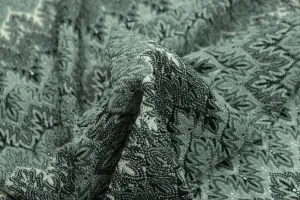Table of Contents
Yarn Guides
Yarn guides are one of the instruments used to control the yarn path. Moreover, this guide requires performing the winding or unwinding process properly. In every operation where yarns are transferred from one package to another, guides are required. Specifically, this guides are used during the winding, warping, beaming, and weaving processes.

In winding and unwinding, it is necessary to control the yarn path. For side withdrawal, it is possible for the yarn to pass along a smooth, varying yarn path. But for end-to-end withdrawal, the yarn must be controlled by placing guides along the yarn path.
Yarn guides are normally made of hard, smooth steel or ceramic. Different guides are made by the manufacturer. Yarn guides should be perfect in size; otherwise, the winding process will be hampered. The yarn path should remain clean during the withdrawal of the yarn. Yarn cleaner is also placed along the yarn path.
Types of Yarn Guides
There are two types of guides that are used during the withdrawal or un-withdrawal of yarn. They are:
A yarn end is required for threading
It takes extra time to thread. So, the speed of operation has increased. The yarn experienced more friction. The shape of the guides may be as follows:
- Ceramic insert type
- Trumpet type
- Bush or roller type
A yarn end is not required for threading
Threading is very easy. So, the speed of operation increased. The yarn experienced less friction. The shape of the guides may be as follows:
- Pig tail
- Slotted type
- Post type
So, they play an important role in winding operations. We should be careful during the selection of this guide. Moreover, in the manufacturing unit, the management should ensure the safety of the employees as well as the workers. Different quality improvement tools can be used to improve the process as well as the work environment, such as 5S, Kaizen, TQM, and TPM.





